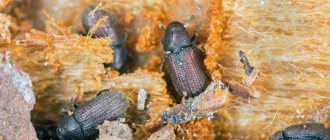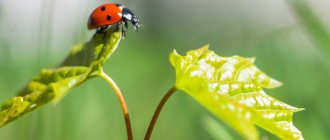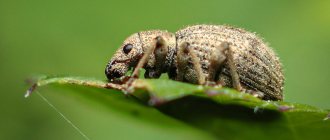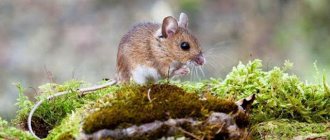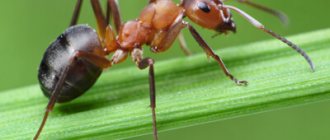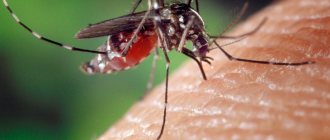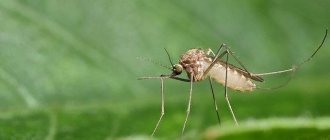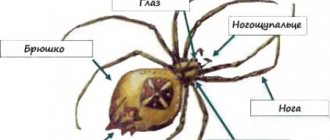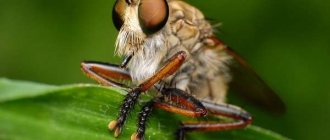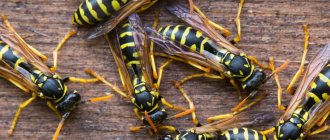The most popular pets are cats and dogs. Many people keep other animals at home: parrots, rabbits, hamsters, fish. But domestic insects are truly rare pets. So if you want to have an exotic animal that also won’t require a lot of attention, pay attention to insects. The insect pet is suitable for busy people, nature lovers, as well as children.
The most famous domestic insect is the bee. However, keeping bees in a house or apartment is a bad idea. If you like these particular insects, then you will need a hive and a place where you can put it. It is desirable that this be a private house or cottage. Contact with bees is not advisable for children, since their stings are painful, and allergies to bee venom are very common.
But there are other types of pet insects, and most of them are completely safe for children. By observing insects in the insectarium, the child will cease to be afraid of them, gain self-confidence, and will become calm and understanding about the nature and characteristics of the life cycle of animals. It’s also extremely interesting to watch how domestic insects move, sleep, eat, and communicate with each other!
Let's figure out what types of insects and arthropods are suitable for keeping at home, what conditions they need, and what these unusual pets eat.
Popular insects as pets
Insects and arthropods, even the most peaceful ones, should not be kept just in the house. You will need an insectarium. This is usually a glass or plastic container with a lid and holes or inserts for ventilation. For some insects, such as ants, special farms are sold. Also find out in advance what conditions the animals need: humidity, food, shelter, etc. We will try to help you with this.
ladybugs
“Ladybug, fly to the sky, your babies are there...” - everyone caught ladybugs in childhood, and now you can also “domesticate” them.
To do this, buy larvae online or catch an adult. Ladybugs, like crickets, can be kept in boxes with small holes for ventilation. These bugs also constantly need moisture to drink - don’t forget to put a sponge or wet napkin in the ladybug’s house.
These insects are very useful: they perfectly destroy aphids and some types of mites (which is what they feed on). By the way, aphids often besiege milkweed - the favorite delicacy of the monarch danaid. “Set” a ladybug on it and get a healthy plant.
stick insect
The stick insect is an interesting insect that grows up to 10-15 cm in length, and with this size it is perfectly camouflaged among branches and leaves. The game “find the stick insect” will be a fun activity for your child.
Living conditions are quite easy to create. For one individual, you need to allocate a space of at least 15x15x30 cm. If there is not enough space, then insects can fight for territory. During the day, the temperature must be maintained at +25-27 °C, at night - not lower than +18 °C. Coconut fiber or shavings, peat, or special purified sand can be used as bedding in the insectarium. Of course, there must be branches and sticks among which insects can move and find shelter. You can put living plants in the container that are not poisonous to pets.
It is easy to provide food for stick insects. Green leaves of any fruit trees and shrubs are suitable for this: apple trees, rose hips, currants, plums, etc.
Mantises
The praying mantis is a predatory insect. Many people know that the female praying mantis eats the male after mating. However, this is not entirely true; with a large amount of food, the male is not in danger.
The temperature in the insectarium should be room temperature, +23-25 °C. To maintain humidity, you need to lightly spray the terrarium with clean, settled water 1-2 times a day. You cannot place the container with the praying mantis in direct sunlight, but the place must be sufficiently lit.
The minimum size of an insectarium or terrarium for a praying mantis is 20x20x20 cm. It is recommended to use crushed dry leaves of birch and oak as soil; coconut substrate is also suitable.
Mantises need to be fed with live food: flies, crickets, cockroaches, beetles. It must be purchased at a pet store. Insects from the street can be infected with bacteria, fungi or mites, which are deadly to praying mantises.
Information for beginners
If you are a novice entamologist, start breeding insects from representatives of the fauna of our region. These can be flying insects that are well adapted to local climatic and natural conditions and provide useful products, for example, butterflies or bees.
Beneficial flying insects of our region are bees.
The honey bee has another name - “apis melifera”. There is nothing unusual in her appearance, but in terms of productivity it is difficult to find equals for her. These flying chemical laboratories provide people with a lot of unique substances that have healing and valuable properties.
Here are just some of the useful waste products of bees:
- propolis;
- wax;
- beebread;
- royal jelly;
- honey, etc.
Some product names are found in books on traditional medicine, others in manuals for fortune telling and magical manipulations, and there are those that are used in everyday life and at work.
Madagascar hissing cockroaches
If you were afraid of cockroaches and other insects, then with the appearance of such a pet, all fears will be a thing of the past. The Madagascar cockroach is simply gigantic, the insect is about 6 cm long! And he can also hiss scary! Otherwise, this is a peaceful, harmless insect that will happily sit on your hand and feast on treats.
The temperature in the insectarium for these animals should be within +25-30 °C. Every other day, the “house” of cockroaches should be sprayed with water. The insectarium should be installed away from the window, since Madagascar cockroaches are nocturnal animals and do not like bright light. They must also have shelter. Sand, dry leaves, paper, coconut substrate can be used as soil.
You can feed cockroaches fruits, vegetables, berries, and not necessarily fresh ones - they eat everything. You will also need to install a small container of water in the insectarium and update it regularly.
Giant scolopendra
Size – up to 35 cm.
For the most fearless, the giant centipede is a suitable pet. It’s worth noting right away that it is not recommended for beginners to have such a pet because of the dangers it poses and the difficulties in keeping it. The giant scolopendra is not only very fast, but also poisonous. And on top of that, he has a hot-tempered and aggressive character. The bite of a giant scolopendra causes severe pain and swelling, and a person with an allergy can be overtaken by anaphylactic shock.
The animal must be kept in a terrarium with high sides and houses inside so that it can hide. Temperature and humidity conditions must be carefully observed. You can feed the animal small insects or newborn rodents. It is important to remember that centipedes are quite strong: in some cases they are even able to lift the lid of the terrarium and escape.
Beetles
At home you can keep rhinoceros beetle, goliath, and other species. The conditions for them are approximately the same. The dimensions of the terrarium or insectarium should be at least 50x50 cm, at the bottom there should be a layer of litter about 4 cm, and pieces of wood, driftwood should be placed on it, or a rather thick branch should be installed vertically, along which the beetles can move. For such insects, room temperature and moderate humidity are suitable.
The specifics of the menu need to be clarified in each specific case, but most beetles can be fed with fruits, vegetables, leaves and plant juice.
Swimmers
These are aquatic beetles with a streamlined body. The head, chest and abdomen of the animal are tightly articulated. The swimmer has strong jaws and long thread-like antennae. The beetle's eyes are located on the sides of the head. The color of the insect's body parts is different: the upper side is brown, black or green, the lower side is yellow. Animals have wings. They make long flights at night. The back pair of legs helps swimmers move along the surface of the water.
Such insects easily live and reproduce in captivity. Pets are not picky about the state of water and lighting. The swimmers are kept in an aquarium with soil, stones and plants. Beetles feed on protein foods: insect pupae, meat, fish.
Ants
Ants are pet insects that have nothing in common with those that sometimes appear in the house and cause a lot of inconvenience. Ants should be purchased directly from a special farm. The upper part of the farm is transparent, so you can watch the life of the insect colony for hours.
Ants need high humidity, so do not forget to regularly wet the base of the farm and arrange a “watering hole” - place cotton wool soaked in water in a certain place. You should also always maintain cleanliness, remove food uneaten by ants, and wash the food tray.
Ants need to be fed a variety of foods. Suitable for them:
- insects;
- corn;
- fruits and berries;
- sweet natural syrups and juices.
Don’t forget to provide the ant with “building materials”: small pebbles, sand, and crushed bark. It is very interesting to watch how they build themselves “barricades”, “houses”, “corridors”.
 Hermit crabs
Hermit crabs
Hermit crabs live in mollusk shells and, as they grow, change their homes to larger ones. The largest species can live from 30 to 70 years and even more. They are excellent climbers and diggers and are interesting to watch.
Some types of hermit crabs live underwater, others live on land. Most aquatic species live in salt water, while those that live on land must travel to the sea to reproduce.
These animals come in a variety of colors, such as red, brown, or purple, and have a variety of body patterns, including specks, spots, or stripes. They are omnivores, either scavenging or eating dead animals or plants.
Hermit crabs are popular pets. They need free space, a certain substrate, fresh or salt water, food, additional shells and some objects on which they can climb. If you want your pet cancer to feel good, you should take into account all the nuances.
Labiopods
Arthropods, which include various centipedes, cause fear to many. However, these animals can also be fun pets. You can keep several types of centipedes as pets, which are sold in pet stores. It is not worth catching in the wild - the animal may be poisonous.
Centipedes live at room temperature and like to dig holes, so make sure there is enough coconut substrate in the insectarium. Also, branches, leaves, and snags will not hurt, among which arthropods will arrange shelters for themselves. Most centipedes are carnivores and will need to feed on insects.
Trichogramma
Not everyone knows about such an insect as Trichogramma. But this miniature creature brings invaluable benefits - it fights representatives of more than 70 species of pests. Moreover, it destroys not adult individuals, but eggs - Trichogramma lays larvae in them, which, as they develop, destroy the contents. In one season, a female can lay 500–800 eggs.
Trichogramma is an egg-eater from the order Hymenoptera, the smallest insect measuring 0.4 - 0.9 mm
The ability to eradicate pests on a large scale makes Trichogramma an alternative to chemical insecticides. It is even bred on an industrial scale and sold to gardeners.
Locust
You can keep several types of locusts at home:
- green Guyanese;
- rainbow;
- foamy.
This is an unpretentious insect that feels great at room temperature and moderate humidity. The size of the insectarium depends on how many insects live in it.
Feeding locusts is easy. Green lawn grass and the greens of any cereals are suitable for her. You can treat the locusts with sprouted wheat, rye and other cereal plants.
Lacewing
Attractive pale green insects prey on aphids and mites. Lacewings were the first to be specially bred to protect greenhouse plants from pests.
In summer, lacewings often fly into apartments - at night they are attracted to electric light
If you touch an insect, an unpleasant odor will appear. But lacewings are harmless to humans.
Crickets
The chirping of these insects has a calming effect on many, which is why they are most often kept at home. However, unfortunately, the lifespan of these insects is short - about 2 months. They are undemanding when it comes to temperature, but the air must be fairly dry.
Crickets can eat a wide variety of foods:
- fresh herbs, lettuce and tops;
- fresh vegetables and fruits;
- oatmeal "Hercules" (uncooked);
- powdered milk;
- dry food for cats and dogs;
- Gammarus.
Medvedki
This insect, with its unusual appearance, makes one think of space aliens. If you want to have such an “alien” 6-7 cm long at home, you will need an insectarium with a base size of at least 50x50 cm. Since the mole cricket lives in the ground, the soil layer should be at least 10-15 cm. The soil must be sprayed once a day settled water.
You can feed the mole cricket with root vegetables, plant tubers, and white bread crumbs. Take care of the metal mesh lid. Air flow into the insectarium is necessary, but the insect will easily tear the fabric.
Spider tarantula
This is the type of domestic insect that should not be given to children. Tarantulas are hunters; all types of tarantulas are poisonous, so you need to handle them carefully and know when they are safe. The toxicity and potency of tarantula venom depend on the gender and age of the insect, the time of year and a number of other factors. The poison can cause swelling, dizziness, nausea, and an allergic reaction.
But watching furry hunters is very interesting. These are large insects, the size of which can, depending on the species, reach 3-7 cm. The color of the spider’s “fur” varies, from almost black to reddish, gray, sand.
Tarantulas do not weave webs, they live in burrows, so make sure that the insectarium has a thick layer of soil. You can use orchid substrate as soil. The size of the bottom of the insectarium is at least 50x50 cm. In the insectarium you can place shelters and driftwood branches, among which the tarantula will move, hide and hunt.
Young spiders need to be fed once every 2-3 weeks, adults over 3 years old - once every 1.5-2 months. Tarantulas eat live crickets, insect larvae, and cockroaches.
Name and meaning of the most common insects
ladybugs
Small and fast bugs have different colors of the body and the color of the dots. Representatives of all 70 species exterminate different types of aphids and other pests. Our ancestors also drew attention to the fact that where there are a lot of these cute bugs, the harvest will be excellent.
Ladybugs in the photo.
Gallica
Aphidamiza (pictured below), unlike pear galitsa, does not spoil the leaves, but, on the contrary, by poisoning the aphids with a poisonous liquid during a bite, it destroys them. The larvae that feed on it grow and develop, and over time, falling to the ground, they become cocoons.
Spiders
Spiders are different, but they all help people fight different types of pests.
Ground beetles
Ground beetles (photo below) and their larvae eat the eggs of wireworms and other parasites, but when pesticides are added to the soil, these “garden orderlies” immediately die. Comfortable conditions for them are foliage, sawdust, piles of stones or simply open ground.
Silkworm
The silkworm has long been known to the peoples of Asia as a source of valuable fiber, from which they make an expensive and beautiful material - silk. However, the life cycle of the silkworm is very interesting to observe, which is why butterflies are increasingly kept as pets. Children especially love them. After all, something changes in the insectarium every day.
The hairy, almost white butterflies do not live long, about 10 days, and do not feed during their life. But tiny larvae emerge from the laid eggs, and they grow literally before our eyes. The main thing is to provide them with enough food. The larvae eat mulberry (mulberry) leaves and do not refuse to gnaw on anchar, figs, and ficus. Given suitable conditions and good nutrition, you can observe the life of insects and their magical transformations for a long time.
Domesticated insects
There are vivid examples of how people domesticate insects and use the fruits of their life. Some have become members of everyday life, while others contribute in ways that are hard to imagine.
Bees
Honey bee.
Of course, the first in this ranking are bees. They are honey plants that provide benefits and a sweet dessert. But out of the wide variety of representatives of the genus, and there are more than 20 thousand of them, about 20 breeds are more or less friendly to people.
These insects are geniuses at what they do. The structure of their family and home is amazing. They have a clear hierarchy, each individual has its own responsibilities and important role. It is not known for certain when exactly domestication occurred, but they have been living side by side for several millennia.
Silkworm
Silkworm.
There are two brothers, one is a pest, the other is a very beneficial insect. The silkworm feeds on mulberries and produces such valuable and high-quality silk. And in some Asian countries the larvae are eaten.
The butterfly itself is simple and does not look remarkable. The first mention of the process of domestication of silkworms in China was found 5,000 years ago. Nowadays various new breeds are being actively developed, which is made by threads of different strength, length and even color.
Drosophila
The fruit fly is an experimental subject for the work of geneticists. This small insect is the most studied on the planet. A lot of experiments, testing of poisons and medications were carried out on it.
Drosophila.
They are used:
- in genetics;
- experimental evolution;
- body modeling;
- study of immunity.
Ants
Someone will immediately remember from childhood the familiar experience of dipping a straw into an anthill and then its sour taste. This is the same poison that is used to create medicines. They also benefit from the fact that they collect an expensive type of tea, rooibos.
Interestingly, they are amazing farmers - they grow various mushrooms for themselves. Moreover, recently new varieties have become the subject of their cultivation.
Ants.
Cochineal
Cochineal mealybug.
Cochineal mealybug is a source of natural dye. It is called carmine because of its bright shade. They use a substance secreted by worms, so they were specially bred for a long time. Safe pigment was used for coloring:
- fabrics;
- products;
- carbonated drinks;
- cosmetics.
Peacock eyes
Beautiful large peacock-eye butterflies surprise with the span of their wings and their variegation. And caterpillars are a delicacy - their protein content is twice as high as regular meat. By comparison, the price for caterpillars is 400 times higher than the price for beef.
Saturnia caterpillar.
Peacock butterfly.
Spiders
Different representatives of arachnids provide benefits in various industries:
- medicines and pesticides are made from poison;
House spiders.
- they are eaten as a delicacy;
- are subjects of experiments;
- often raised as pets.
One of the types of spiders brought from Bolivia is bred in special laboratories. They react completely calmly to the presence of people if they do not touch the thin web. Clothes made from this type of web are the most expensive.
ladybugs
These cute, seemingly harmless bugs are real gluttons and active predators. They are even specially bred and sold. And spotted bugs are valued because they, like professional means, destroy hordes of aphids, thyroid pests, mold and fungi.
But these spotted beetles are actually not that adorable in character. They are promiscuous and often suffer from various diseases.
Ladybugs.
Zlatki
These beetles with beautiful, stiff wings often suffer at the hands of people. In search of unusual decorations, they remove representatives of species. The pattern on their wings is unique and very unusual. Metallic luster can be:
- bronze;
Variety of borer beetles.
- gold;
- green;
- yellow;
- red.
When should you not keep an insect as a pet?
First of all, you need to understand whether you can provide living conditions for your pet insect and safety - both for yourself and for him. If there are animals in the house that can hunt insects and cause them harm, you should not have spider bugs.
Also, you should not choose a pet insect if you are allergic to the substrate, bites, food for this type of animal.
Insects are contraindicated in a house with small children, who can independently begin to “get to know” the pet and, as a result, get injured.
In general, insects are wonderful pets, unpretentious, exotic, and usually harmless. Therefore, if you need just such an animal in your house, choose an insect to suit your taste.
Danaid monarch
This is a large and very beautiful butterfly, the wingspan of which reaches 10 cm. Its habitat is North America, so if you are a resident, for example, of the United States, you can go out into the garden, look under the leaves of the cottonweed and find there creamy white eggs or small caterpillars If you live in Russia, it is easier to order Monarch Danaid on the Internet.
Raising these royal butterflies is quite easy. Carefully dig up the plant that the caterpillar is attached to and bring it home. For two weeks it will eat the milkweed, and then you will witness a real miracle: the caterpillar will shed its green “skin” and turn into a pupa. After another 14 days, the butterfly will spread its black and orange wings.
There are detailed instructions on the Internet for caring for an adult Monarch Danaid, however, it is best to release it into the wild. Special tags are also sold online that allow you to track your pet's migration. True, this is a dubious waste of money, because Danaid monarchs live only about two months.
